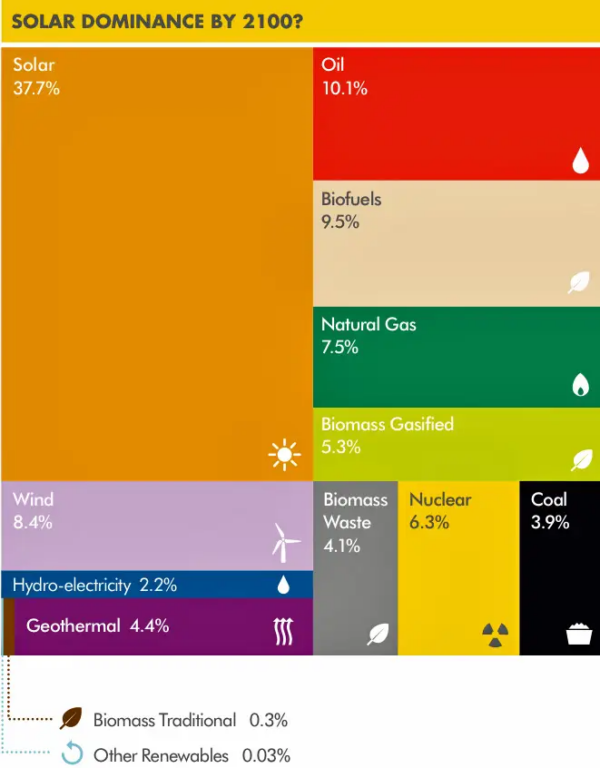Energy is a basic need, just like air and water. Energy helps us grow food, keeps us warm, and gives us the power to explore uncharted territories, both on and off the earth. With time, even though the outlets remain the same, the scope is increasing, leading to a surge in energy demand. Have you wondered what the next 100 years look like for energy? What would be our primary source of energy, collectively how much energy would be required to sustain our civilization?
The average energy use per capita of the world currently stands at approx. 21,000 kWh per year. In the USA, the per capita is more than 80,000 kWh, while in India it is around 7,000 kWh. Our decisions in the 21st century should be taken in the context of the beckoning 22nd century. The United Nations predicts Earth’s population will reach 11 billion people by the year 2100. By 2100, temperature could increase by 5 degrees Celsius, agricultural produce will fall by more than 30%.
Moreover, it is predicted fossil fuels will run out by the end of the century. Oil will last around 50 years, coal about 100 years. To avoid any non-reversible catastrophe, our investments need to be directed to cleaner alternatives. Energy is the fundamental key to take strides and progress forward, and to sustain our species.
Three-quarters of the world will be living in cities halfway through this century. So we need to bring urban transformation. Infrastructure, innovation and investment are the critical pillars of green growth and development. One of the deepest issues our civilization is facing today aside from water and food shortage is the issue of energy security, across all the nations. So what will ensure energy security across all nations?
We need to make energy cheap, abundant and accessible. Today, fuels have unfortunately become more of a political tool than an energy source, with countries owning it.
The amount of solar energy hitting Earth in one hour is enough to power our entire civilization for an entire year, which is approximately 160 petawatt hours. We need to do everything in our control to hasten the energy transition. The overarching philosophy is to live with nature in harmony.
Solar is poised to be the leading energy source in the next century. In terms of cost, renewables are almost at par with their dirtier counterparts, and within a few years will soon overtake them in terms of the volume of the overall worldwide energy produced. Alongside the frontrunners are wind and nuclear fusion.

Source: Business Insider
By 2050, two-thirds of the generation will be from renewables and nuclear power and by 2100 the figure may very well be in the higher 90s range. We have made remarkable strides in increasing the safety of fusion reactors, making the chances of large-scale dangerous mishaps minuscule. However, some experts doubt the economic viability of a nuclear fusion plant. Theoretically speaking, the fuel with the lowest EROI (energy return on investment) would be the market leader, at any point in time. If we keep on marching on the current path, we will soon be at a point of no return.
The author is a founding team member and vice president (VP) at Oorjan Cleantech
The views and opinions expressed in this article are the author’s own, and do not necessarily reflect those held by pv magazine.
This content is protected by copyright and may not be reused. If you want to cooperate with us and would like to reuse some of our content, please contact: editors@pv-magazine.com.








By submitting this form you agree to pv magazine using your data for the purposes of publishing your comment.
Your personal data will only be disclosed or otherwise transmitted to third parties for the purposes of spam filtering or if this is necessary for technical maintenance of the website. Any other transfer to third parties will not take place unless this is justified on the basis of applicable data protection regulations or if pv magazine is legally obliged to do so.
You may revoke this consent at any time with effect for the future, in which case your personal data will be deleted immediately. Otherwise, your data will be deleted if pv magazine has processed your request or the purpose of data storage is fulfilled.
Further information on data privacy can be found in our Data Protection Policy.